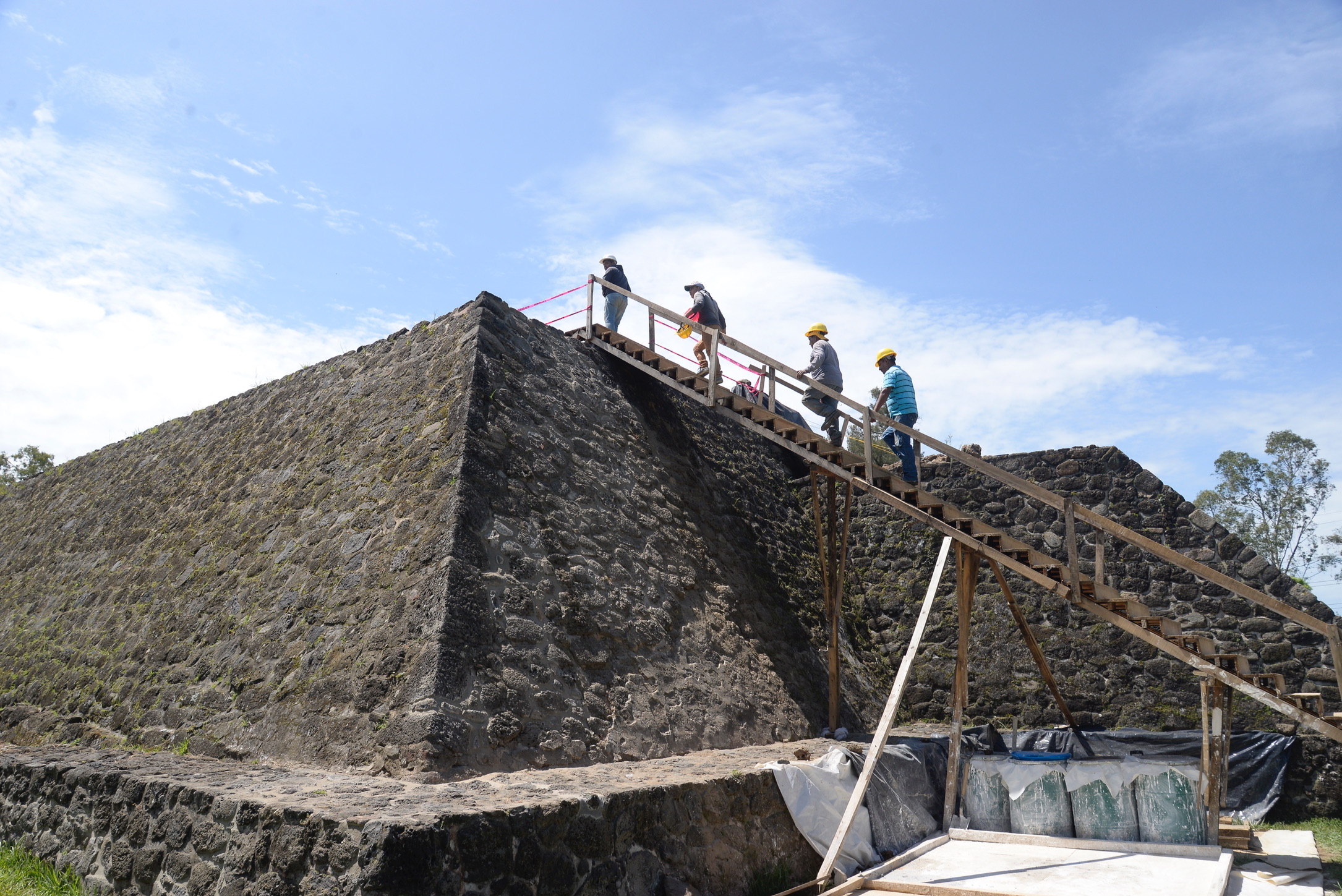
Mexico's earthquake uncovered an ancient temple inside Teopanzolco
The 2017 earthquake in Mexico affected the core of the pyramid and made the building tilt down. When digging to assess the damages, the archeologists found an…
The archeological site of Teopanzolco was built in what is now the city of Cuernavaca - at Morelos state, 526 miles to the south of México City - between 1200 and 1521 AD (or so archeologists thought after the site was discovered in 1921 because of the ruins and the evidence that the modern city hadn’t vanished).
Then the earth shook. The most devastating earthquake in 32 years, with a magnitude of 7.1 on the Ritcher scale and an epicenter right in the state of Morelos, also shook the Teopanzolco temple’s timeline.
The quake toppled and affected the structure of thousands of buildings. It collapsed the core of the pyramid and made the temple tilt down. The government shut down the site to the public so archeologists could assess the damage. During the exploratory digs, besides the loose stones, the signs of instability, and a high humidity accumulating for years, they found an unknown structure six feet under the floor of the upper part of the pyramid: stucco-coated walls, a sidewalk and the remains of a pilaster.
A new temple, probably older than the Templo Mayor (main temple) of Tenochtitlan, located in what is now Mexico City. It could also be dedicated to Tlacoc, god of rain.
"Apparently, these are the remains of the first stage of construction of the Teopanzolco pyramid, whose antiquity could correspond to the Middle Postclassic period (1150-1200 AD), according to the characteristics of its construction system,” says the official website of the government’s National Institute of Anthropology and History (INAH by its acronym in Spanish), which manages the archeological site.
In 1150, the Tlahuicas arrived in Teopanzolco as the first settlers. The Mexicas arrived later during the Late Postclassic period, and built new temples, rooms and palaces. The researchers, according to EFE, believed that they were the ones who introduced the architectural style that is now visible with double staircases and double temples as main features. But the recent finding changes the timeline of the archeological site. There is now more solid evidence that Teopanzolco is older than the Mexica architecture.
Barbara Konieczna, the head of the team of archeologists working on the site, said, as quoted by the INAH website, that this change in the timeline is due to the fact that "the discovered basement was built first, and then the Main Temple was built in Tenochtitlan at the image of this previous type of construction.”
RELATED CONTENT
“It is not that the Mexicas that brought this architectural style to this region. On the contrary, the Tlahuica constructions inspired them to build the Templo Mayor,” she highlighted.
Hence the structure could also be contemporary with Tenayuca in Mexico, "which is the first site to have with a double staircase leading to the top, where the two temples are located," added Georgia Bravo Lopez, another team archeologist.
There is other evidence that suggests a bigger antiquity for this substructure, according to Konieczna: ceramic remains and a censer with Tlahuica motifs, as well as "a significant amount" of coal, which can be attributed either to ritual activity, to some disaster or to its use to destroy the temple and build the new structure.
The archeologists will follow up more studies to prove their first assumptions on the findings.
Maybe it is not a mere coincidence that the meaning of Teopanzolco in the Nahualt language means "in the older temple."










LEAVE A COMMENT:
Join the discussion! Leave a comment.